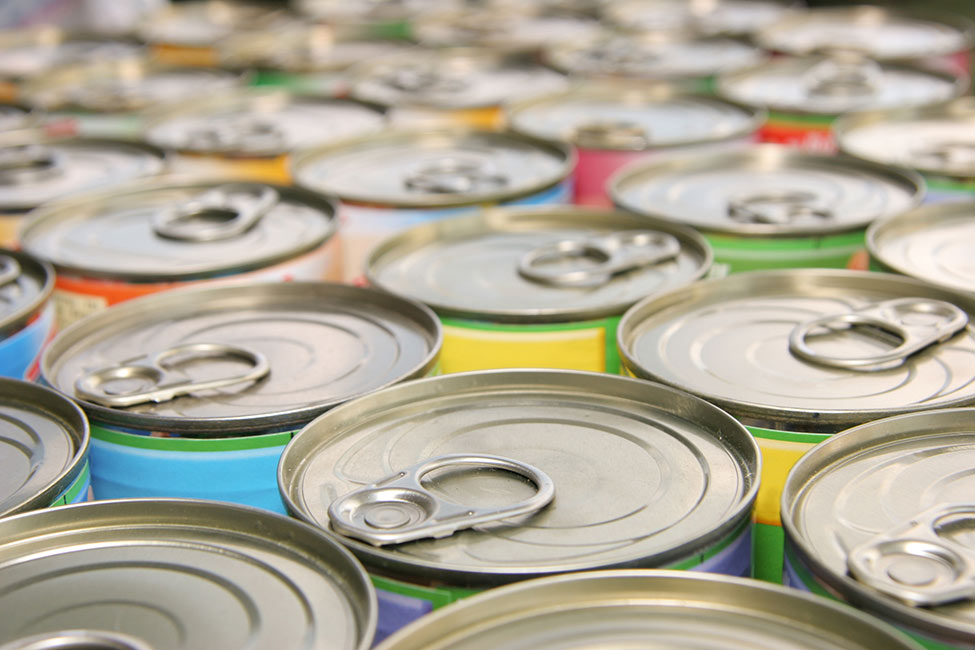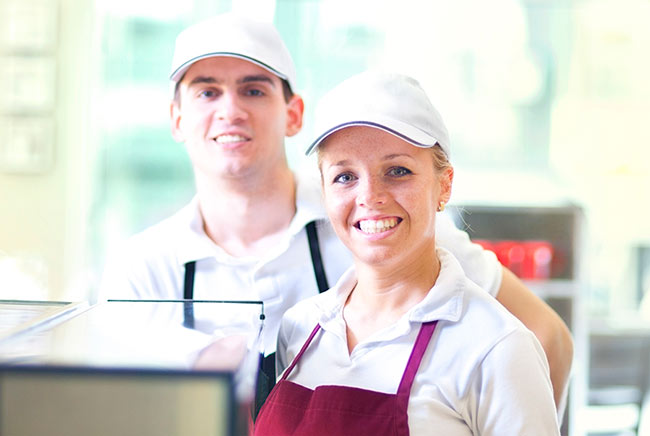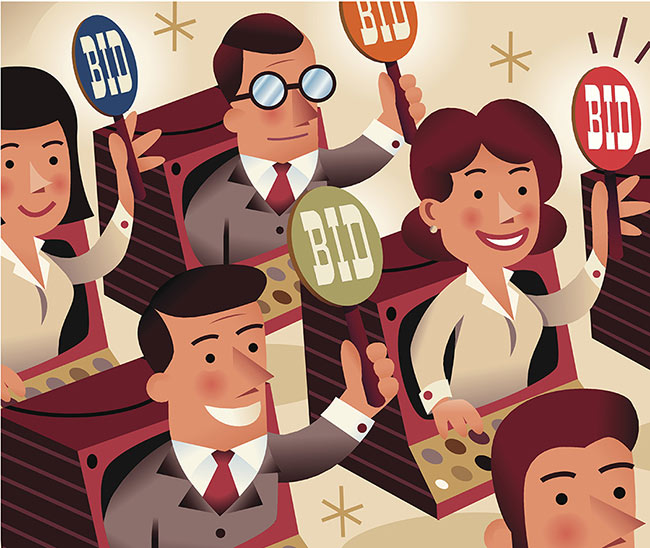••• packaging research
What’s outside counts, too
Consumers value cleaner, greener food packaging
 A study conducted for Memphis, Tenn.-based Evergreen Packaging has identified four packaging-related trends for 2017: Millennials’ impact on food and beverage priorities; the importance of clean packaging; the power of leveraging of fresh and clean attributes to position healthy products; and the growing popularity of functional beverages.
A study conducted for Memphis, Tenn.-based Evergreen Packaging has identified four packaging-related trends for 2017: Millennials’ impact on food and beverage priorities; the importance of clean packaging; the power of leveraging of fresh and clean attributes to position healthy products; and the growing popularity of functional beverages.
The study, now in its seventh year, is conducted independently by research firm EcoFocus Worldwide and examines wellness and sustainability trends impacting the food and beverage industry to determine how consumer tastes, demographics and values are reshaping purchasing decisions.
Millennial motivators. According to Forbes, more than 50 percent of Millennials make an effort to buy products from companies that support the causes they care about and they’re twice as likely to care about whether their food is organic than any other generation. The EcoFocus survey results illustrate additional details that tie into this larger national trend. Millennials are leading the escape from mass-produced, over-processed and over-packaged foods and beverages with a demand for real, less-processed ingredients. They want the preservatives and artificial ingredients out and natural, nutrient-dense ingredients in. Sixty-nine percent of Millennials have changed what they buy in order to avoid artificial ingredients in foods and beverages. Millennials aren’t just thinking about the product’s contents, they are differentiating packaging for improved personal and planetary health: 73 percent say they try to buy products in packaging that is recyclable; 59 percent say they look for beverages in packaging that is made with renewable materials.
Clean packaging gains momentum. The new study results show the clean-labeling movement is expanding to clean-processing and clean-packaging trends. As a Prepared Foods article highlighted, the rules have been rewritten and clean and clear labeling is the new global standard, extending to a more holistic demand for a clean supply chain. These demands apply to packaging as brands are expanding their transparency on all fronts – from supply chain details to their packaging choices. The EcoFocus study shows that 70 percent of grocery shoppers strongly agree or agree that foods and beverages with healthier ingredient lists should use packaging materials that are healthier too (74 percent of Millennials). With the demand for healthier packaging materials, it’s important to keep in mind that 86 percent of grocery shoppers and 87percent of Millennials believe some types of packaging can leave undesirable chemicals in beverages. They say cartons and glass containers are the least likely to do so – and that cartons and glass best protect freshness without preservatives.
The new value-add: fresh + clean = healthy. The definition of what makes foods and beverages healthier is becoming increasingly complex.Clean ingredients have moved from a trend to the norm for many categories and brands. Creating products that are fresh and eco-friendly is the new go-to as these attributes will become increasingly crucial contributors to consumers’ measurement of “healthy” in 2017: 74 percent of grocery shoppers and 78 percent of Millennials say better personal health is a big benefit of an eco-friendly lifestyle.
Many brands have already taken out preservatives and removed artificial ingredients. The next challenge is to leverage packaging to convey and deliver freshness without the chemicals that consumers view as undesirable for their health. Brands need to ask themselves if their packaging is aligned with their focus on clean ingredients and messaging. Seventy-one percent of grocery shoppers say that packaging that keeps beverages fresh without preservatives is the most important quality for healthy beverage packaging.
Grocery shoppers’ perception of different packaging materials heavily impacts the grocery industry. Smart brands and retailers must align with consumer values and effectively communicate the commitments behind their product, processing and packaging choices. Sixty-seven percent of grocery shoppers and 69 percent of Millennials say recyclable packaging is an extremely or very important quality for healthy beverage packaging. Fifty-nine percent of grocery shoppers and 64 percent of Millennials say packaging made with renewable materials is an extremely or very important quality for healthy beverage packaging.
Naturally-functional beverages. Consumers are increasingly looking to beverages to play new roles in their diets and health routines.Drinkable breakfasts and the “snackification” of beverages are fueled by consumer interest in nutrition and performance drinks that act as meal replacements and guilt-free snacks. In fact, BevNet reports that the carbonated soft drink category is continuing a five-year decline while demand for natural and organic drinks increases as consumers gravitate toward healthier options,with natural beverages driving 40 percent of dollar growth in the industry. Industry leaders should expect consumers in 2017 to demand beverages that work harder, whether for refreshment, satiety, energy, immunity boosting, sleep aid, blood sugar management or a host of other functional benefits now associated with these multifunctional power beverages.
When identifying the most desirable nutritional attributes for healthy beverages, grocery shoppers surveyed shared the following preferences:63 percent are seeking a good source of calcium; 61 percent are looking for beverages that are a good source of fiber; 61 percent want their beverages to contain lowered or reduced sugar; 60 percent are drawn to beverages that are a good source of antioxidants; 57 percent want to consume beverages with increased protein; 55 percent buy beverages because they are a good source of omega 3;and 46 percent of grocery shoppers are looking for beverages that contain probiotics.
These shifts in consumer priorities are prompting companies to make changes. From Walmart’s commitment to sustainably-sourced packaging to McDonalds’ pledge to source 100 percent of all fiber-based packaging from recycled or certified sources by 2020 and Food Business News declaring clean labeling as the top trend of the year, it is clear that fresh and sustainable will be trends at the heart of consumer demands throughout 2017.
••• social media research
Engage me, please
Branded videos aid the purchase process

According to research commissioned by Brightcove Inc., as reported in a Research Brief from the Center for Media Research, 74 percent of consumers say there is a connection between watching a video on social media and their purchasing decision-making process. The Science of Social Video: Turning Views into Value report revealed that 46 percent of viewers have actually made a purchase as a result of watching a branded video on social media and another third have considered doing so. Further insights for brands include: 81 percent of consumers currently interact with brands on social media and 43 percent have done so through watching branded video; and 79 percent agree that video is the easiest way to get to know a brand online.
Social video consumption has risen in recent months, says the report, presenting a growing window of opportunity for brands to get in front of their audiences on social media. The results showed that: 67 percent of respondents watch more video on social networks like Facebook, Twitter and Snapchat than they did a year ago; the average consumer now watches 49 minutes of social video every day; and 60 percent of viewers expect the amount of social video they watch to continue rising over the next year.
The research also shed light on broader social video viewing preferences. Half of social video views take place on YouTube, 36 percent on Facebook and the remaining 14 percent is divided between social networks like Snapchat, Twitter and Instagram. The top attributes looked for in branded social video were for content to be relevant to consumer interests (44 percent) and engaging (40 percent). Facebook is the social network on which consumers are most likely to like (51 percent), share (44 percent) or comment on (32percent) a good social video. Forty-five percent of people are more likely to tell friends and family about a brand after watching a good video by that brand on social media and 76 percent of people are more likely to watch a social video if recommended by friends or family.
••• customer experience
Consumers: Increasing minimum wage won’t improve service
Is automation automatic?
 Consumer attitudes about how raising the minimum wage to $15 an hour will affect their overall shopping experience were uncovered in a survey of 1,500 Americans nationwide by Cincinnati researcher Colloquy. The current federal minimum wage is $7.25 an hour. The firm asked consumers if they would expect better customer service and a better overall experience if the minimum wage were raised to $15 an hour. Also asked: If your favorite retailer raised its minimum wage to $15 an hour, would you actually receive better service and have a better overall experience?
Consumer attitudes about how raising the minimum wage to $15 an hour will affect their overall shopping experience were uncovered in a survey of 1,500 Americans nationwide by Cincinnati researcher Colloquy. The current federal minimum wage is $7.25 an hour. The firm asked consumers if they would expect better customer service and a better overall experience if the minimum wage were raised to $15 an hour. Also asked: If your favorite retailer raised its minimum wage to $15 an hour, would you actually receive better service and have a better overall experience?
Fifty-nine percent of all respondents said they are justified in expecting to receive better service and a better overall experience; 69 percent of all respondents said they would not actually receive better service or have a better overall experience; 71 percent of men said they would not actually receive better service, versus 66 percent of women; 66 percent of young Millennials in the 18-24 age group said they are justified in expecting better service, versus 59 percent in the same age group who said they would not actually receive it; 60 percent of older Millennials in the 25-34 age group said they are justified in expecting better service, versus 69 percent who said they would not actually receive it.
“The minimum-wage issue is of keen interest to marketers who believe in the power of the frontline employee to engage the customer and create an experience that sets a brand apart from competitors,” Colloquy Editor-in-Chief Jeff Berry says. “Brands may see an opportunity to surprise and delight customers based on the skepticism shown by so many in the survey about actually receiving better service.”
In other key survey results: 68 percent of women said they are justified in expecting better service with a $15 an hour minimum wage, versus 59 percent of the general population and just 50 percent of men; 38 percent of the general population said raising the minimum wage to $15 an hour would lead to retailers adding more automation, resulting in poorer service and a poorer overall experience; 44 percent of men said raising the minimum wage to $15 an hour would lead to retailers adding more automation, resulting in poorer service and a poorer overall experience, versus 33 percent of women; 38 percent of the general population said they support raising the minimum wage to $15 an hour.
Colloquy’s consumer survey was conducted between October 17-21,2016. The nationwide survey of 1,500 U.S. consumers has a margin of error, which measures sampling variability, of +/- 2.5 percentage points at the 95 percent confidence level.
••• ad research
More growth on tap for programmatic
Faster than social media, online video
According to Zenith’s Programmatic Marketing Forecasts,programmatic advertising will grow 31 percent in 2017, faster than all other digital channels. This report, which covers 41 advertising markets, estimates that programmatic will grow comfortably faster than social media (which will grow 25 percent) and online video (20 percent) and a growing proportion of these other channels will be traded programmatically. Programmatic will become the principal method of trading digital display this year, accounting for 51 percent of expenditure, and will rise to 58 percent of expenditure in 2017.
 At first programmatic marketing was often used to reach target audiences as cheaply as possible, with little regard for the quality of the sites in which the ads appeared. It is now being used, in conjunction with valuable data segments, to target individuals in intelligent and creative ways, identifying those most likely to be receptive to a brand’s messages.
At first programmatic marketing was often used to reach target audiences as cheaply as possible, with little regard for the quality of the sites in which the ads appeared. It is now being used, in conjunction with valuable data segments, to target individuals in intelligent and creative ways, identifying those most likely to be receptive to a brand’s messages.
Programmatic advertising has risen to dominate the digital display market in just a few years, having accounted for just 13 percent of display ad spend in 2012. Programmatic ad spend grew from $5 billion in 2012 to$39 billion in 2016, at an average rate of 71 percent a year. Its growth is slowing down as it consolidates its dominance of the display market but according to the study, expect programmatic advertising to grow at an average of 28 percent a year to 2018, when it will reach $64 billion.
The U.S. is the biggest programmatic ad market by a long distance, worth $24 billion in 2016 and accounting for 62 percent of total global programmatic ad spend. The U.K. comes a distant second, worth $3.3billion, and China third at $2.6 billion.
Programmatic trading accounts for 70 percent of display in the U.S. and the U.K., but only 23 percent in China, says the report, so there is plenty room for rapid growth in China.
Though these figures refer only to digital media, programmatic trading is starting to spread into the traditional media. Some television,radio and digital out-of-home platforms already offer automated and data-driven trading of inventory. Eventually programmatic trading will be available as standard across traditional media, concludes the report.
••• ad research
IAB maps future of virtual reality
Hardware a roadblock?
 Virtual reality will emerge as the next big thing in digital advertising, says the Interactive Advertising Bureau (IAB) in a report, citing opportunities for immersive storytelling, shopping, product demos and the power to stir emotions in a new way as some of virtual reality’s major strengths. Anna Bager, senior vice president and general manager of mobile and video at IAB, expects virtual reality to grow “exponentially” in the next few years as an advertising medium.
Virtual reality will emerge as the next big thing in digital advertising, says the Interactive Advertising Bureau (IAB) in a report, citing opportunities for immersive storytelling, shopping, product demos and the power to stir emotions in a new way as some of virtual reality’s major strengths. Anna Bager, senior vice president and general manager of mobile and video at IAB, expects virtual reality to grow “exponentially” in the next few years as an advertising medium.
In the next two years, says the report, IAB expects more companies to start to leverage 360-degree video, 3-D digital billboards and even TV commercials with virtual reality. Other uses could include interactive games, product demonstrations and virtual tours. This next phase of experimentation in the medium will be critical in determining its success, the report found.
“The Pokémon Go phenomenon has raised the profile of AR and VR, bringing the power of the medium into the mainstream, just as major brands and publishers have begun to tap into its breathtakingly immersive capabilities,” Bager says.
The report warns that the extraordinary level of hype surrounding virtual reality leads people to expect to be wowed by their first virtual experience. Analysts say VR is especially popular within the tech industry but high-end car manufacturers like Audi, Jaguar and Volvo, beverage companies like Coca-Cola and Anheuser Busch, clothing companies like Nike, and even cheese maker Boursin have featured virtual reality in recent ad campaigns.
The IAB does note, however, that content creators need to understand that the VR production process is far from straightforward. With VR,consumers can interact with content and change their field of view and perspective, opportunities traditional media doesn’t present. Though the hardware is becoming cheaper, sleeker, more advanced and more readily available, the current rate of adoption will likely lead to monetization challenges, the report suggests.
Car dealerships, real estate agencies and travel companies, for example, can offer headsets as a service at their locations but other applications might require consumers to buy headsets and download apps, none of which can be guaranteed.
••• b2b research
B2B content marketers cite confidence gap
Looking for better open rates
 As pressure mounts for B2B marketers to deliver high-quality and highly-targeted leads, 82 percent reported being only “somewhat confident” or“not very confident” in the effectiveness of their campaigns, according to The Campaign Confidence Gap report from Boston-based SaaS firm SnapApp.
As pressure mounts for B2B marketers to deliver high-quality and highly-targeted leads, 82 percent reported being only “somewhat confident” or“not very confident” in the effectiveness of their campaigns, according to The Campaign Confidence Gap report from Boston-based SaaS firm SnapApp.
A number of challenges contributed to the low level of confidence B2B marketers reported in developing effective campaigns, including an over-reliance on static, lead-gated PDFs to generate leads. According to the survey,conducted by Demand Gen Report and sponsored by SnapApp, nearly half (41percent) of B2B marketers listed identifying new lead sources as their top demand-gen campaign challenge. B2B buyers now not only expect content that is relevant and compelling to their specific needs but they are also increasingly less tolerant of campaigns that fail to speak to their unique areas of interest. As a result, one-third (33 percent) of respondents said they are struggling to develop compelling calls-to-action that capture prospects’ attention.
“We were surprised to learn how uncertain B2B marketers were about the effectiveness of their campaigns and wanted to understand what was causing this confidence gap,” says Aaron Dun, senior vice president of marketing, SnapApp. “We found that traditional B2B marketing strategies have become stale for buyers, reflecting a seller-centric approach to marketing.”
Beyond traditional brand-focused campaigns and messaging, someB2B marketers are looking at content-enabled campaigns that address customer interest points and facilitate engagement. Among B2B marketers who are using content-enabled campaigns, more than half (54 percent) saw open rate improvements of at least 20 percent, while 66 percent also saw at least a 5 percent increase in click-through rates. The top of the funnel saw the biggest benefits, as 66 percent of B2B marketers noted that their content-enabled campaigns produce a greater response to these lead-generation offers. The use of interactive content is expected to increase dramatically in the next 12 to 24 months, with 87 percent of B2B marketers predicting at least 10 percent of their content will be interactive. The top five content formats B2B marketers are using or plan to use for content-enabled campaigns include; video (95 percent), surveys (92 percent), interactive infographics (85 percent), ROI calculators (84 percent) and assessments (82 percent).
While interactive content is not expected to replace traditional marketing campaigns in 2017, the survey revealed that B2B marketers will increasingly utilize these formats because of its ability to produce strong response rates and enable prospects to self-qualify. Additionally, interactive content will also enable marketers to collect data and insights that sales teams can use to accelerate the best prospects through the sales process.
The survey was conducted online by Demand Gen Report during Q2and Q3 of 2016. The respondents included more than 100 B2B marketers.
